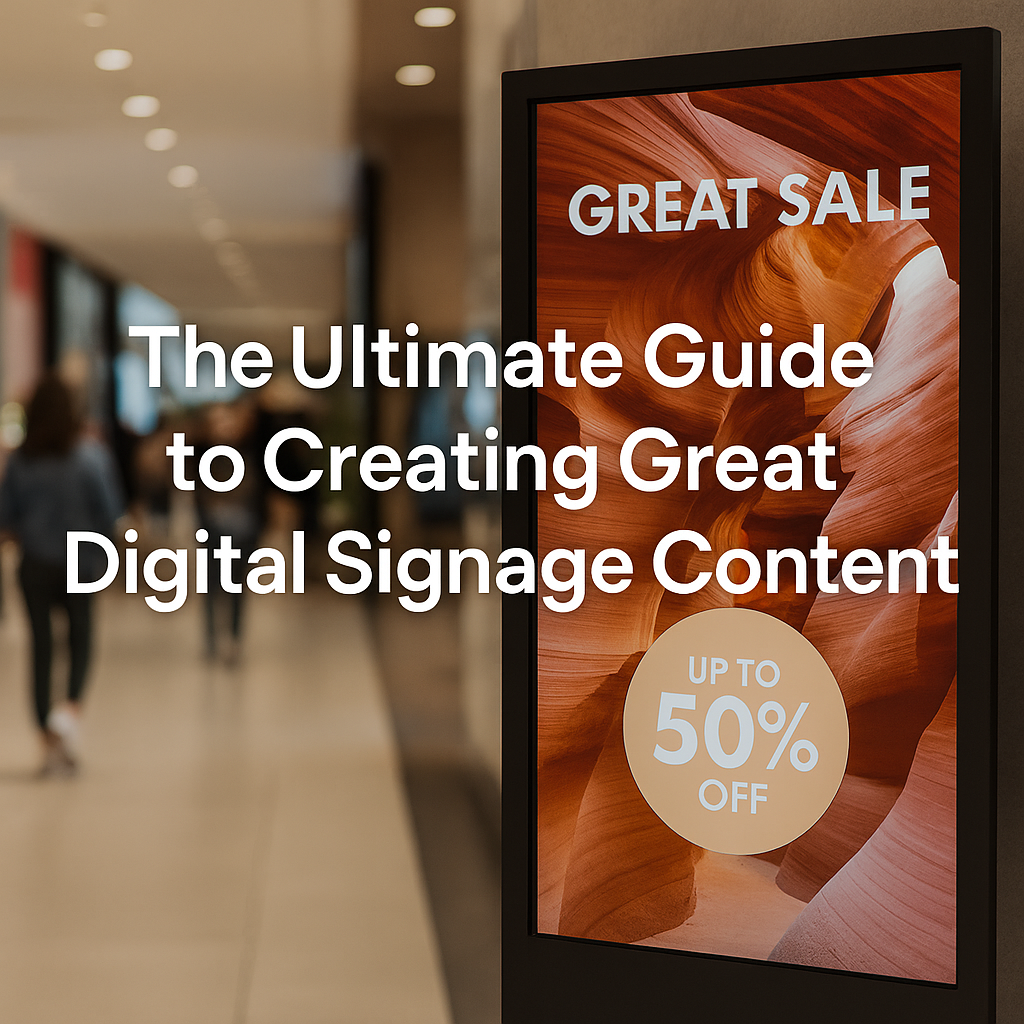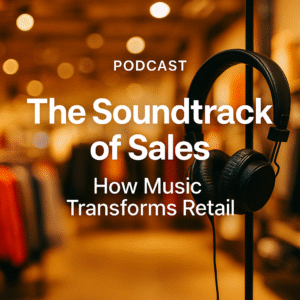No matter how sleek your digital screens are or how powerful your signage software is, none of it will truly matter without one key ingredient: compelling content.
Digital signage is only as effective as the message it conveys. Strong content can stop passersby in their tracks, engage your target audience, and influence real decisions, whether it’s buying a product, attending an event, or learning about your brand. The right content, in the right place, at the right time, transforms screens into storytellers, brand ambassadors, and silent salespeople.
This comprehensive guide explores the principles and best practices of digital signage content creation, so you can turn every screen into a high-impact tool.
Keep It Simple and Easy to Read
Digital signage is often viewed from a distance, and viewers usually only have a few seconds to absorb the message. That’s why clarity and simplicity should be your top priorities. Use bold, legible fonts and a clean layout. Avoid cluttering the screen with too much text or unnecessary graphics. Instead, stick to short headlines, crisp messaging, and clean design.
Tips:
– Use high-contrast color combinations (e.g., dark background with light text).
– Choose fonts that are large, sans-serif, and readable from a distance.
– Focus on one core message per slide or screen.
Use High-Quality Visuals and Motion Graphics
Visual storytelling is the heart of digital signage. Strong visuals can evoke emotion, convey information, and capture attention. Use high-resolution images, brand-consistent graphics, and short video clips to tell your story quickly and effectively.
Animation and motion graphics can make static displays come to life, but use them sparingly. Too much movement can be distracting, while well-timed animation draws attention to key messages and transitions smoothly between content segments.
Scrutinize Every Word and Frame
Even the best-designed signage will fall flat, or worse, damage your credibility, if it includes a spelling error, factual inaccuracy, or poorly phrased message. Proofreading isn’t just about grammar; it’s about making sure your content respects your brand and your audience.
Also, ensure your content aligns with current social norms and sensitivities. In today’s fast-moving and diverse environment, even well-meaning content can backfire if it feels outdated or tone-deaf. Review messaging regularly with fresh eyes and a diverse team to avoid missteps.
Tailor Content to the Occasion, Location, and Time
Context is everything. What works on a digital screen in a hotel lobby might not work in a busy train station. Think about where your signage is placed and who will see it. A coffee shop in the morning should display breakfast deals, while a gym in the evening might promote fitness classes or smoothies.
Seasonal campaigns, local events, and holidays should also shape your content strategy. Dynamic scheduling tools make it easy to update content in real-time based on dayparting, weather, or live data feeds. This keeps your screens fresh and your messaging relevant.
Include a Clear Call to Action (CTA)
Don’t just inform, invite action. Whether you want people to scan a QR code, follow a social page, make a purchase, or enter a contest, tell them what to do clearly and quickly. Start with a strong action verb like ‘Buy,’ ‘Scan,’ ‘Book,’ or ‘Visit.’ Keep the CTA short, direct, and visible. Make sure it’s relevant to the content and delivers value to the viewer.
Integrate with Social Media and Online Platforms
Today’s audiences are socially connected, so bring that connection to your screens. Featuring live Instagram feeds, TikTok content, or Twitter mentions on your signage builds trust, authenticity, and engagement. You can even highlight user-generated content or run hashtag contests.
Encourage people to interact with your brand online by linking signage content to social media handles or streaming platforms like YouTube. This builds a bridge between offline and online engagement, extending your digital reach beyond the physical screen.
Refresh Content Regularly
Nothing dulls a viewer’s attention more than stale, repetitive content. If someone sees the same slide day after day, it becomes background noise. Develop a content calendar and rotate different messages based on weekdays, time slots, or promotions. Even small tweaks, like changing colors or swapping images, can help revive audience interest.
Use analytics tools, if available, to track engagement and update your strategy accordingly. Try A/B testing content variations to see which ones perform better.
Make Content Inclusive and Accessible
Digital signage should be inclusive to all audiences, including people with disabilities. Use larger fonts, audio cues, high contrast visuals, and simple icons. Avoid flashing content that could trigger seizures. Include subtitles or closed captions in videos to aid the hearing impaired.
Accessibility doesn’t just improve usability, it shows your brand cares about every viewer’s experience, which builds trust and brand loyalty.
Match Content Length to Viewing Time
Where your screen is placed affects how long someone will engage with it. At a checkout counter, you may have 5–10 seconds. In a lobby or waiting room, you could have minutes. Match your content accordingly. Use bold headlines for quick-glance environments and more detailed content for longer dwell times.
Use transitions and motion carefully so they enhance rather than hinder content absorption. Always test how content looks and feels in real-world conditions before deploying it widely.
Use Data and Feedback to Improve
Just like any marketing channel, your digital signage strategy should be data-driven. Measure impressions (if your software supports it), engagement (like QR code scans), or any behavior linked to your calls to action.
Gather feedback from both staff and customers. What content do they find useful? What do they ignore? Use these insights to tweak messaging, test new formats, and keep improving over time.
Conclusion
Digital signage content is more than just slides and visuals, it’s your voice, your brand story, and a chance to connect meaningfully with your audience. When done right, it’s one of the most cost-effective and powerful tools you can use to influence decisions and build engagement in real time.
By focusing on clarity, creativity, and context, and using the strategies outlined above, you’ll ensure that your digital signage doesn’t just fill space, but delivers value, emotion, and results.





